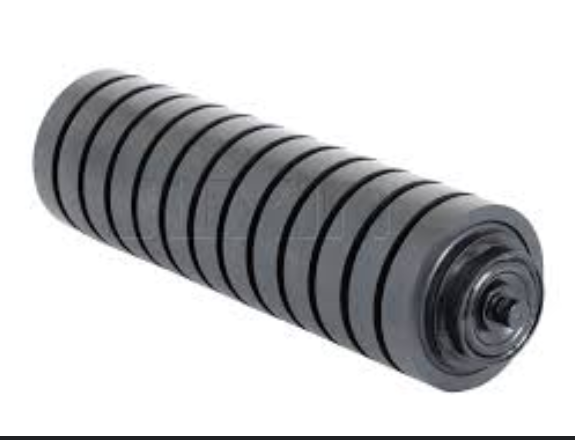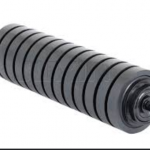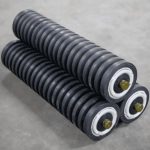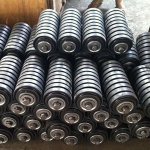IMPACT IDLER
IMPACT IDLER
Scope of application: Special accessories for belt conveyors
Diameter: 89-133mm
Load capacity: 100Kn
Length: 800-1400mm
Weight: 5-35kg
Shelf life: 1 year
Introduction: Buffer rollers are used at the feeding point of belt conveyors to reduce the impact of falling materials on the conveyor belt. They are mainly developed for corrosive environments such as coal washing plants, coking plants, and chemical plants. They have a toughness that is more than 10 times that of ordinary metals and a lifespan that is longer than traditional column rollers
product details
Buffer rollers are used at the feeding point of belt conveyors to reduce the impact of falling materials on the conveyor belt. They are mainly developed for corrosive environments such as coal washing plants, coking plants, and chemical plants. They have more than 10 times the toughness of ordinary metals and a lifespan five times that of traditional column shoes. They are corrosion-resistant, flame-retardant, anti-static, and lightweight, and are widely used in mining.
price
There are many models and specifications, but they are not labeled one by one. Prices range from tens to hundreds. If you need any size, you can directly contact customer service. The specific price will be determined based on the specifications, model, size, and thickness you require. The rollers produced by our factory will improve their efficiency while ensuring safety.
classification
Buffer rollers include spring plate type rollers, buffer ring type rollers, strong buffer type rollers, adjustable elastic type rollers, hanging type rollers, etc.
Performance and advantages
The buffer roller is lightweight and has low rotational inertia. The specialized polymer material for rollers is lightweight, with a specific gravity of one seventh that of steel. Rollers made from this material weigh about half of ordinary rollers, have low rotational inertia, and low friction between rollers and belts.
use to
Buffer rollers are installed below the receiving section of the conveyor to reduce the impact of materials on the conveyor belt during material dropping, thereby extending the service life of the conveyor belt. The spacing between buffer rollers is generally 100-600 millimeters.
Standard diameter parameters
According to the Chinese national conveyor industry standards, there are four standard types of buffer roller diameters for belt conveyors with a bandwidth of 500mm-1400mm, namely:, φ108mm,φ133mm,φ159mm。
protect
(1) Buffer roller temperature protection
When the temperature of the belt conveyor drum exceeds the limit due to friction with the belt, the detection device installed closely to the drum sends an overtemperature signal. After receiving the signal, the receiver delays for 3 seconds, causing the execution part to act, cutting off the power supply to the motor, and the conveyor automatically stops running, providing temperature protection.
(2) Roller group speed protection
If the conveyor malfunctions, such as the motor burning out, the mechanical transmission part being damaged, the belt or chain being pulled apart, the belt slipping, etc., the magnetic switch in the accident sensor SG installed on the driven part of the conveyor cannot be closed or cannot be closed at normal speed. At this time, the control system will follow the inverse time characteristic and after a certain delay, the speed protection circuit will take effect, causing the executing part to act and cutting off the power supply to the motor to avoid the accident from expanding.
(3) Buffer roller coal bunker coal level protection
There are two coal level electrodes in the coal bunker, high and low. When there is no empty car in the bunker, the coal level will gradually rise. When the coal level reaches the high level electrode, the coal level protection will be activated. Starting from the first belt conveyor, each conveyor will stop one by one due to the stacking of coal at the tail of the machine.
influence factor
Types of buffer rollers and factors affecting conveyor resistance:
1) The diameter of the roller, the mass of the rotating part, the installation quality, the groove angle, the lubrication condition, and the spacing between the rollers, as well as the transmission drum.
2) The thickness, hardness, and tension of the rubber covering the upper and lower parts of the conveyor belt, as well as the groove shaped rollers.
3) Belt speed, environment and temperature, properties of transported materials, etc., buffer rollers.
 Hebei Hengya Conveyor Equipment Co., Ltd
Hebei Hengya Conveyor Equipment Co., Ltd


